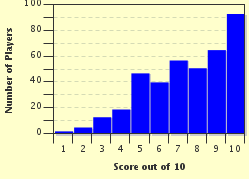Quiz Answer Key and Fun Facts
1. Our ship departed Sydney on a miserable, rainy day, and set course for the southern tip of New Zealand. It took over two days to get there, but what is the name of the body of water that we were crossing?
2. Our first view of New Zealand was Fiordland, known for its spectacular scenery. We sailed into several fiords, known in NZ as sounds. Which sound did we NOT see, because it is several thousand kilometres away?
3. After we left Fiordland in the late evening, we passed through the Foveaux Strait and headed up the east coast. Our destination was the second largest city on the South Island of New Zealand. What city were we in, where the city centre is known as The Octagon, and where we found this statue?
4. Welcome to Wellington, New Zealand! On the left side of the photo you will see a sight common to many ports in New Zealand. One of the country's major exports is timber, most of which is processed overseas, but what sort of timber is it?
5. Napier, on the eastern coast of the North Island, was probably the highlight of my trip. The city was flattened by a major earthquake in 1931, and had to be rebuilt. The residents took the opportunity to rebuild the town in a particular architectural style. What style did they choose?
6. The city of Tauranga was our next stop. It is on the Bay of Plenty, on the eastcoast of New Zealand's North Island. We joined a bus tour and found this well-known crop growing a couple of kilometres inland. What iconic NZ crop is harvested from these vines?
7. Auckland is the largest city in New Zealand and is situated near the top of the North Island. My photo shows Waitemata Harbour, the main harbour for Auckland, with the Harbour Bridge in the background. We were on top of a steep hill near the pretty suburb of Devonport. What is the name of this hill?
8. The Bay of Islands was our final port of call, and we anchored off the small town of Paihia. A quick trip across the Te Karuwha Parade bridge and we are in one of the most historically important places in New Zealand. A treaty was signed between the British government and the local Maori chiefs in 1840. What is the name of the locality, and the treaty?
9. I found this little fellow outside a shop in Dunedin. He is a kiwi, a New Zealand icon, but do you know what genus he is classified as?
10. At the time of our visit in 2015, this was the tallest structure in New Zealand, and also the tallest in the Southern Hemisphere. It is called Sky Tower and is 328 metres tall. Which New Zealand city is it in?
Source: Author
ozzz2002
This quiz was reviewed by FunTrivia editor
Tizzabelle before going online.
Any errors found in FunTrivia content are routinely corrected through our feedback system.

